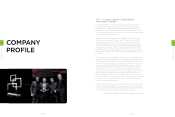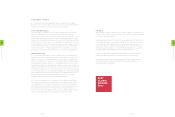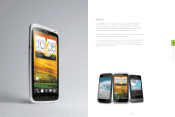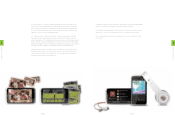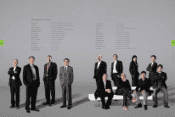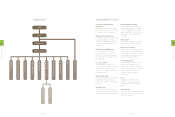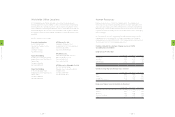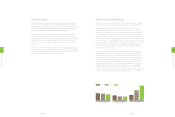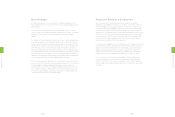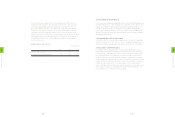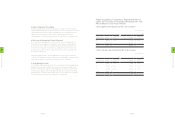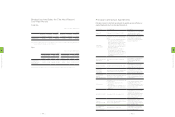HTC 2011 Annual Report Download - page 18
Download and view the complete annual report
Please find page 18 of the 2011 HTC annual report below. You can navigate through the pages in the report by either clicking on the pages listed below, or by using the keyword search tool below to find specific information within the annual report.
Industry Overview
The wireless telecommunications sector is in the midst of tremendous growth.
In response, mobile phone makers, telecom operators and software developers
have introduced countless products and services that aim to satisfy the increase
in consumers' mobile demand. Today, the mobile internet is a global consumer
phenomenon, and mobile phones already support a cornucopia of multimedia
services. Mobile phones are now digital music players, web browsers, e-mail portals,
high-speed internet devices, social network hubs and GPS navigation tools. They are
an indispensable personal entertainment and work platform, and consumer desire
is pushing the smartphone penetration rate up rapidly. International research firm
Gartner reported that smartphone penetration rose from 18.6% in 2010 to 26.6% in
2011. Growth is expected to continue for years to come.
So much functionality in the palm of your hand would not have been possible without
the coordinated effort of multiple industries and countless companies.. The quality
of each input impacts directly on final product quality and indelibly affects the user
experience. Companies like HTC - the crucial link in delivering customer delight -
leverage technical expertise to integrate software and hardware into a variety of
smartphone products tailored to the needs of different market consumer segments.
Products then reach consumers through downstream telecom service providers and
retail channels.
Data-centric 3/4G wireless communication technology has now superseded previous
voice-centric 2G standards. The move to 4G is particularly evident in the United States,
as US telecom providers seek to further expand mobile multimedia services. The
smartphone share of global mobile phone sales continues to grow, fueled by rapidly
evolving hardware, increasingly intuitive user interfaces and an expanding universe of
mobile content and services. The 470-million smartphone units sold worldwide in 2011
(Gartner Research) represent a stunning 58% rise over the previous year.
An early leader in Windows Mobile, HTC has expanded aggressively into the
Android platform to take full advantage of rising demand for mobile digital services.
HTC launched the world's first Android mobile phone in 2008. The company has
also wholly transformed the mobile phone design paradigm - demanding harmony
between hardware, aesthetics and user experience in place of the prevalent
industry focus on hardware specifications. As such, HTC delivers a holistic user
experience to its users. HTC is also a 4G leader. Our launch of the world's first
WiMAX Android and LTE Android mobile phones once again confirms HTC's
leadership in the smartphone industry.
BUSINESS
OPERATIONS
3
BUSINESS OPERATIONS
| 32 |
3
BUSINESS OPERATIONS
| 33 |



